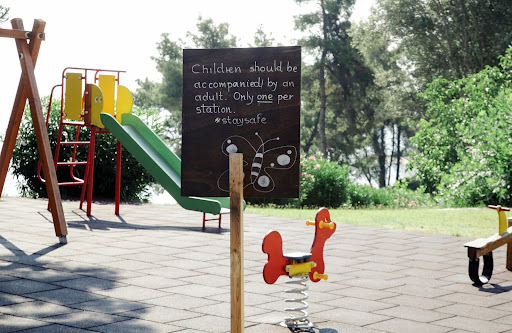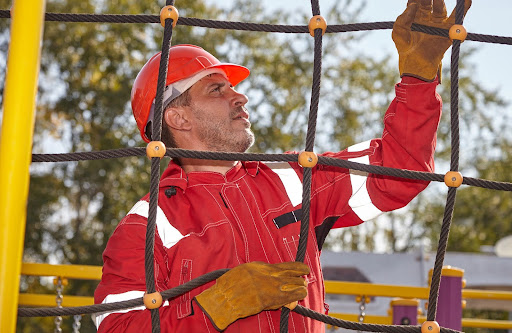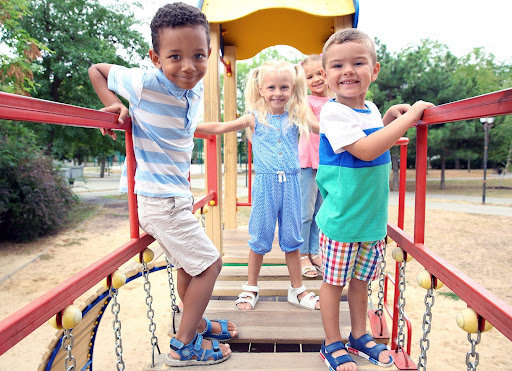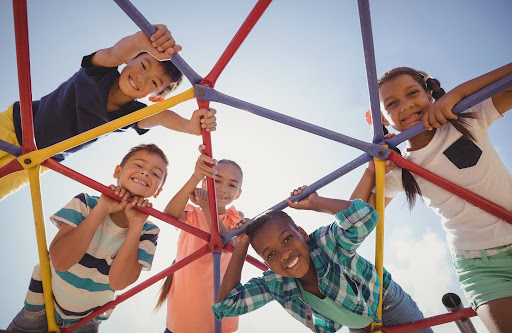Playgrounds are some of the staple amenities in a HOA community. It offers children spaces to play and interact while building a sense of community. However, ensuring these playgrounds are safe is a shared responsibility that needs consistent attention to detail.
The Importance of Playground Safety in HOAs
Playground safety in HOA communities is significant for a number of reasons. Here are some of them:
Preventing Injuries

The safety of a playground is necessary to minimize and prevent injuries to kids who use them. You can find many ill-maintained playground hazards, including broken equipment, slippery surfaces, or improper installation. All of these can cause accidents and hurt those who are using them. However, through regular safety checks and immediate hazard prevention, your HOA can also help minimize such risks while creating a safe play environment for children.
Legal and Financial Liabilities
Accidents occurring on HOA property can lead to costly lawsuits and settlements. As part of the HOA board, you should make an effort to consistently ensure playground safety by following established standards and making prompt repairs. Doing these helps lessen the occurrence or likelihood of incidents where your association can be held legally liable.
Community Trust
Trust within the community is a must. One way this manifests is through the safety of the playground. It shows that your HOA is committed to keeping the well-being of all the residents in the community. By focusing on safety, you also build trust and satisfaction among community members, strengthening the overall sense of belonging and community spirit.
Compliance with Regulations
There are many federal, state, and local regulations that outline safety standards for playgrounds. By complying with all these, you are ensuring playground safety while protecting your association from penalties and reputational damage associated with regulatory violations.
Key Responsibilities of HOA Board Members
As HOA board members, you play an integral part in ensuring safe playground amenities. As such, you must follow through with the following responsibilities:
Conducting Regular Inspections
The HOA board must have a schedule for routine inspections. Conducting inspections helps identify hazards in the playground, such as broken equipment, sharp edges, or unsafe surfaces. For best results, you should contact certified playground safety inspectors (CPSIs) to help achieve more comprehensive evaluations.
Allocating Funds for Maintenance
Part of the HOA budget allocations is for maintaining common amenities in the community. This includes playground upkeep. The HOA should have funds set aside for playground equipment repairs and needed replacements to minimize any safety hazards. By having long-term investments in durable, high-quality playground equipment, you are also helping reduce expenses from frequent repairs.
Enforcing Safety Standards
HOA board members should also ensure the playground complies with national and state standards. Adherence to the U.S. Consumer Product Safety Commission (CPSC) and the American Society for Testing and Materials (ASTM) is critical. If you find any non-compliance issues, address them as soon as possible.
Educating Residents
You can create materials and communications that educate residents about playground safety in HOA communities. Make sure to communicate safety guidelines and rules with residents clearly. This helps promote the responsible use of playground facilities. Some of the best channels to do this include HOA meetings or newsletters.
Implementing and Updating Policies
When creating and implementing policies, the HOA board should have the best interest of the community at hand. Part of that is ensuring the safety of the playground. Therefore, developing clear policies on playground use, maintenance schedules, and incident reporting is crucial. Additionally, best practice would involve regular reviews and updates to these policies so that your HOA can adapt to the changing needs or new regulations.
Homeowners’ Role in Playground Safety
While HOA board members bear the primary responsibility, homeowners also contribute significantly to maintaining playground safety. Here are the ways homeowners can help:
Supervising Children

The number-one person responsible for their kids is the parents or guardians. So, these homeowners need to ensure their children follow the posted rules in the playground. They should also monitor their kids to ensure they use play equipment appropriately. Being vigilant about potential hazards while children are playing is equally important.
Reporting Hazards
While the HOA board is mainly responsible for the upkeep of common amenities, they can’t monitor it 24/7. For this, homeowners should notify the HOA board or management team about damaged equipment, unsafe conditions, or potential risks they observe. This will help the HOA address such issues promptly.
Participating in Community Efforts
Volunteering for clean-up days or maintenance initiatives organized by the HOA fosters a sense of community and ensures the playground remains safe. Attending community meetings helps homeowners stay informed about playground safety in HOA spaces.
Regular Maintenance Practices
Effective maintenance is the cornerstone of playground safety in HOA communities. Key practices include:
Inspecting Equipment

Equipment should be checked regularly for wear and tear, rust, sharp edges, and structural damage. Particular attention should be paid to moving parts like swings, slides, and climbing structures.
Maintaining Safe Surfacing
When choosing or updating equipment in the playground, it is best to use impact-absorbing materials such as rubber mulch, engineered wood fiber, or synthetic turf. These materials need to be evenly distributed and maintained at the required depth so that they can effectively fall.
Cleaning and Sanitizing
Injury-causing hazards aren’t the only dangerous things in a playground. Pathogens and bacteria may also cause harm. Because of this, HOAS must have a regular cleaning schedule of playground equipment to remove dirt, debris, and potential health hazards. Make sure to sanitize high-touch surfaces frequently, especially during flu seasons.
Updating Equipment
Your HOA should regularly consider updating equipment to ensure compliance with regulatory standards. Having outdated or non-compliant equipment must be replaced with modern, safety-certified alternatives.
Documenting Maintenance Activities
The HOA should also keep detailed records of any inspection, repair, or upgrade done on the playground. Doing this demonstrates due diligence and helps to easily backtrack changes that may have caused any future issues.
Complying with Playground Safety Standards
Adherence to established safety standards is a non-negotiable aspect of playground safety in HOA communities. Some of the standards your HOA playground needs to follow includ the followinge:
- CPSC Guidelines: The CPSC’s “Public Playground Safety Handbook” provides detailed equipment design, installation, and maintenance recommendations to minimize risks and enhance safety.
- ASTM Standards: ASTM International publishes comprehensive standards for playground surfacing, equipment, and layout, ensuring optimal safety and functionality.
- ADA Requirements: According to this law, playgrounds must be accessible to individuals with disabilities, promoting inclusivity and equal access.
- State and Local Regulations: HOAs must review and comply with specific playground safety rules in their state or municipality. These localized standards often outline and address unique environmental or community needs.
Enhancing Playground Safety Through Design

Thoughtful design plays a significant role in ensuring playground safety in HOA communities. Consider the following design principles:
- Age-Appropriate Zones. It is best practice to have separate areas for different age groups in your playground. This ensures that younger children cannot use equipment designed for older kids, lowering the risk of injury and promoting safer play.
- Visibility. Playgrounds need open sightlines throughout the area to enable better supervision by parents and caregivers. Good visibility helps adults quickly identify and respond to any issues or accidents.
- Safe Layout. Equipment in the playground should be adequately spaced out. This helps minimize the risk of collision while allowing kids to move freely without overcrowding. Installing barriers or fences may provide additional safety by preventing children from accessing nearby hazards like roads or bodies of water.
- Weather Considerations. Your playground should have durable materials that can withstand extreme weather conditions. Having this ensures that your equipment will be usable without issue for a longer time.
Safety First
Playground safety in HOA communities is a shared responsibility requiring cooperation between board members, homeowners, and professional service providers. By emphasizing maintenance, regulatory compliance, and a safety-first mindset, HOAs can ensure playgrounds remain safe and welcoming for all residents.
Freedom Community Management provides HOA management services in Florida, including playground safety regulation compliance. Call us at 904-490-8191 or contact us online to learn more!


